Toyama Castle Ruin Park
Toyama Castle Ruin Park is a place where Toyama castle had existed since Middle Age. Unfortunately, it was abandoned due to the Meiji government’s order to abolish castles.
Nothing remains other than the replica of a main tower. The current Toyama Castle was constructed as a commemorative building of the Toyama Industrial Exposition in 1954 to mark the completion of post-war reconstruction work and was actually the first restored castle in Japan after World War 2.
Shimin Plaza / Old Ote-mon Gate
The old castle area was considered to be six times as big as the current one. Therefore, an old gate was believed to stand here. It is said that the only high-ranking samurai were allowed to enter the castle from here.
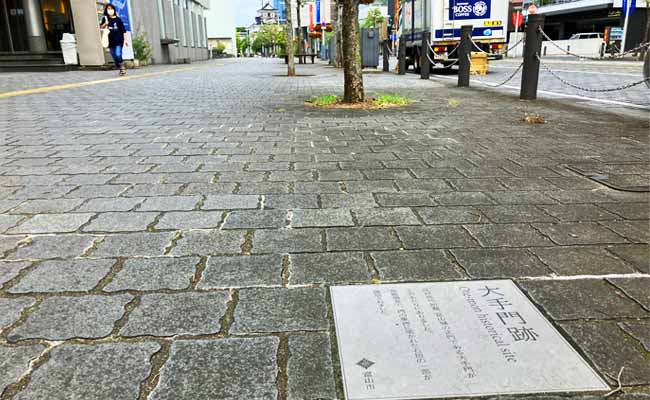
Moat
The western part of the moat was filled because the city wanted to progress the development.
Mysterious Token
There are a star-shaped engraving on the corner of the stone wall around the Kurogane-mon gate. The star was considered as a symbol of protection against evil in yin and yang. They were placed in the southwest direction of the main palace, and are thought to have been intended to prevent evil spirits from entering.
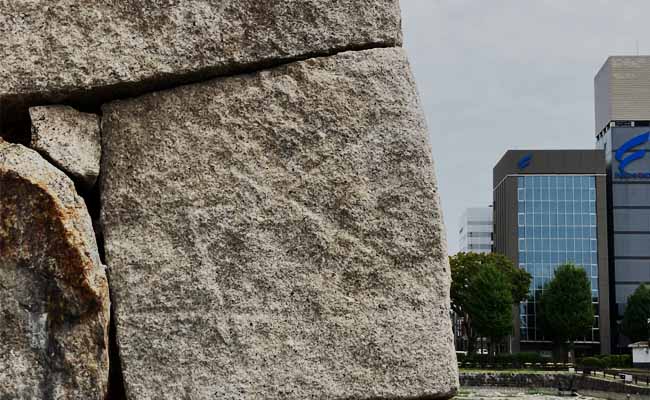
Kagami-ishi (Mirror Rock)
Kagami-ishi, literally translating as mirror rock, represented the lord’s authority. The big stone was split into two by the excellent stonework technique of the clan. They made 19 holes on the surface of the stone to easily split the stone into 2 pieces.
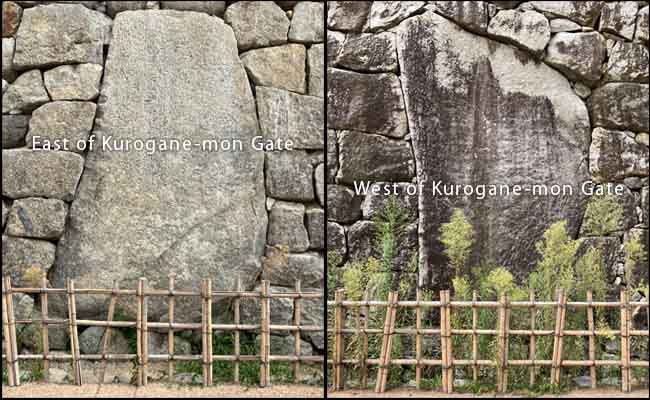
Toyama City Local History Museum (Main Tower of Toyama Castle)
The main keep of Toyama Castle had been never built until the end of WW2 except for its blue print. This is the replica which only contains a museum telling us about the history of Toyama City. The main keep was not build after all. Because the construction material was removed and burned and it always had a risk to get burned by fire accident. Instead of rebuilding new main keep, they invested on the city development. In addition, they didn’t feel any necessities to build a strong castle under a peaceful time like Edo. The main keep is modeled after such big castle as existing Himeji Castle.
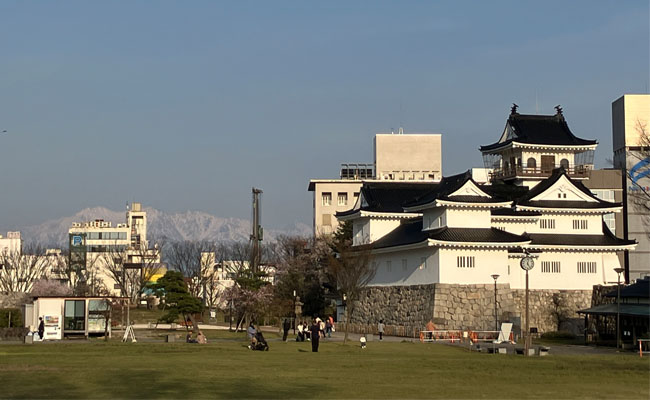
Triangular Monument
At the intersection of the castle park, there is a triangular monument marking the location of the hypocenter of the Great Toyama Air Raid. The monument symbolizes the amazing recovery of Toyama City, where 99.5% of the city was burnt to the ground.
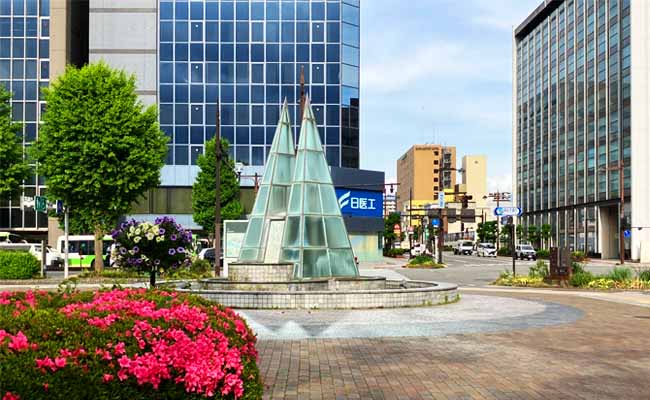
Chitose-Gomon Gate

Chitose-Gomon gate has the length of 3 gen. The weight of the gate is 8.2 tons. This gate connects main palace and Chitose goten palace. The Chitose Palace was built at the east of the main palace in 1849 as a retirement residence for Maeda Toshiyasu, the 10th lord of Toyama. It used to be the gate for the beautiful palace where you can see the very beautiful landscape 10th lord of Maeda clan planted many beautiful flowers. In Meji period, Chitose-gomon gate was sold to the greatest local farmer called Akasofu family who resided at the north of Toyama City. The gete is determined to be put back in 2006 and the relocation work was finished before Hokuriku Shinkansen began to operate. Chitose-gomon is one of the evakuated historical assets which survived even after the air raid during WW2.
Karamete-Gomon Gate
Karamete-mon Gate was used by the lower ranking samurai and local workers.
Matsukawa-Chaya
Matsukawa-Yuransen
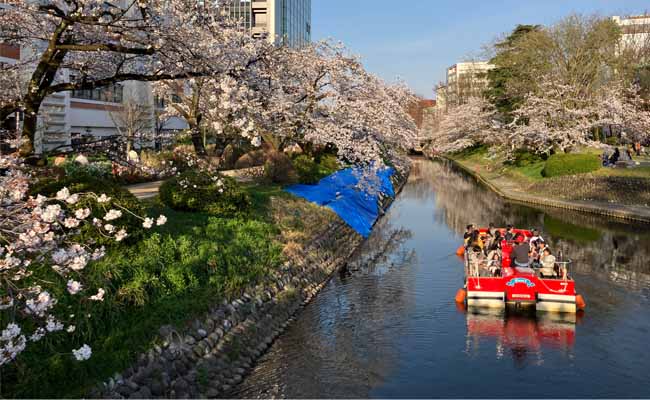
Masuzushi Street
Narezushi is the origin of pressed sushi called masuzushi. It was topped with fermented ayu trout. In later years, they began to use salmon trout instead of ayu trout, which was much easier to make the pressed sushi.
Funahashi
Funabashi is a district in Toyama City along the small beautiful river called Matsu-kawa River. This is where you are reminded of huge brutal river called Jinzu River. Although current Matsu-kawa River is about 10 meters wide, old Jinzu River was 200 meters wide in the Edo Period. In the early 17th century, Toshitsugu Maeda, the lord of the Maeda clan of Kaga domain, built a huge bridge over this site of what had previously been a ferry port. Although it was called a bridge, it was simply a bridge made by connecting amazing 64 boats together and laying 7 planks (each of which was 1.5 meter wide) on top of them.
Along the river are many memorial monument built to console the victims spirit.
Monuments on both banks of the old Jinzu River
The old flow of the Jinzu River
Hasekoshi koji (straightening construction to make the best of the force of floods) was implemented by Toyama City. They built a straightened water course (current Jinzu river) with a width of 1.5m and the depth of 2.0m.